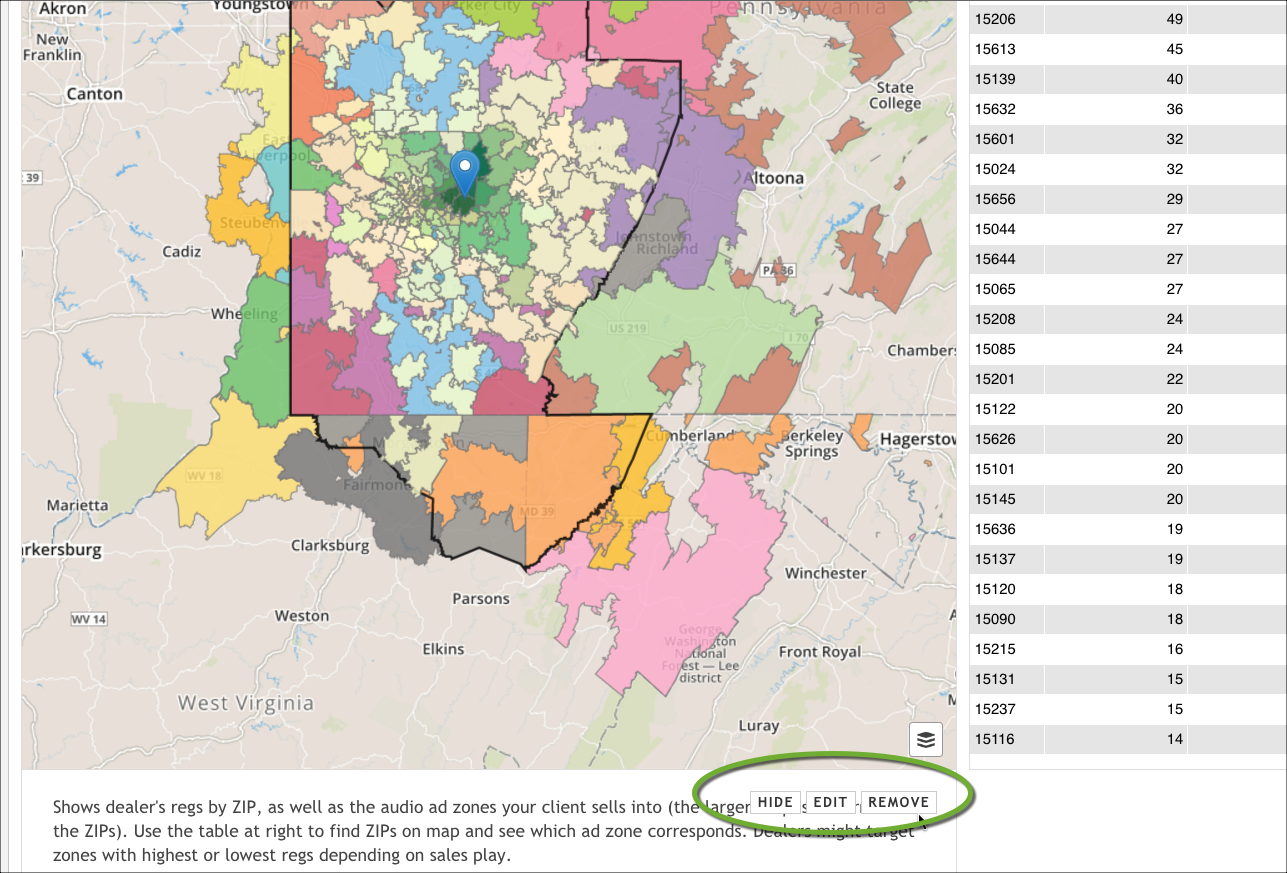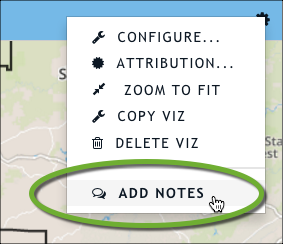Some visualizations in your presentation may have notes that help explain what the visualization is showing.
Notes can be useful as talking points; if you generate a PowerPoint from the presentation and share it with your client, the visualization note is added to the slide's Notes section for the client to see.
In the following example, the template creator felt like the map might be a little difficult to understand since it had several shape layers. She added a note to guide the person who would ultimately see this visualization after creating a presentation from a template (and therefore, who would have no context behind how or why this visualization was created):

Anyone who generates a presentation from a template and finds visualization notes can hover over the note and take the following actions:
- Hide the note -- Prevent it from being shown on the presentation if it's being shared online. Even if the note is hidden on the presentation, it still appears in the Notes section of the generated PowerPoint.
- Edit the note -- Change the content of the note. This is useful if the end user wants to leave the note but make it geared toward the client he or she is pitching.
- Remove the note -- Remove the note from the presentation and from the generated PowerPoint.
If a visualization doesn't have a note and you think it needs one, you can easily add it by clicking the gear icon on the visualization and then clicking Add Notes.

Notes have a 300-character limit, so be concise. Also, be aware that notes will appear in the Notes section of the generated PowerPoint; if a user shares that PowerPoint file with a client, your notes will be visible.